Categories

Mistress Dauntesey Finishes Her Shopping
The next stop is the mercer’s shop. Several of the items on their list can be bought in this one place. The mercer can provide them with the pins they need every day for keeping their clothing, ruffs and cuffs in place.

Mistress Dauntesey Heads to Market
Let’s head into town! Master Dauntesey has left Agecroft recently to take his wool fleece into London for sale. Perhaps he will return with some silk or spices or other luxuries for Mistress Dauntesey and his daughters.

The Market Fair: Economics and Entertainment
The “great trading event” of the Middle Ages was the Medieval fair. These were huge, festive, open-air gatherings held once a year or once a quarter for several consecutive days.
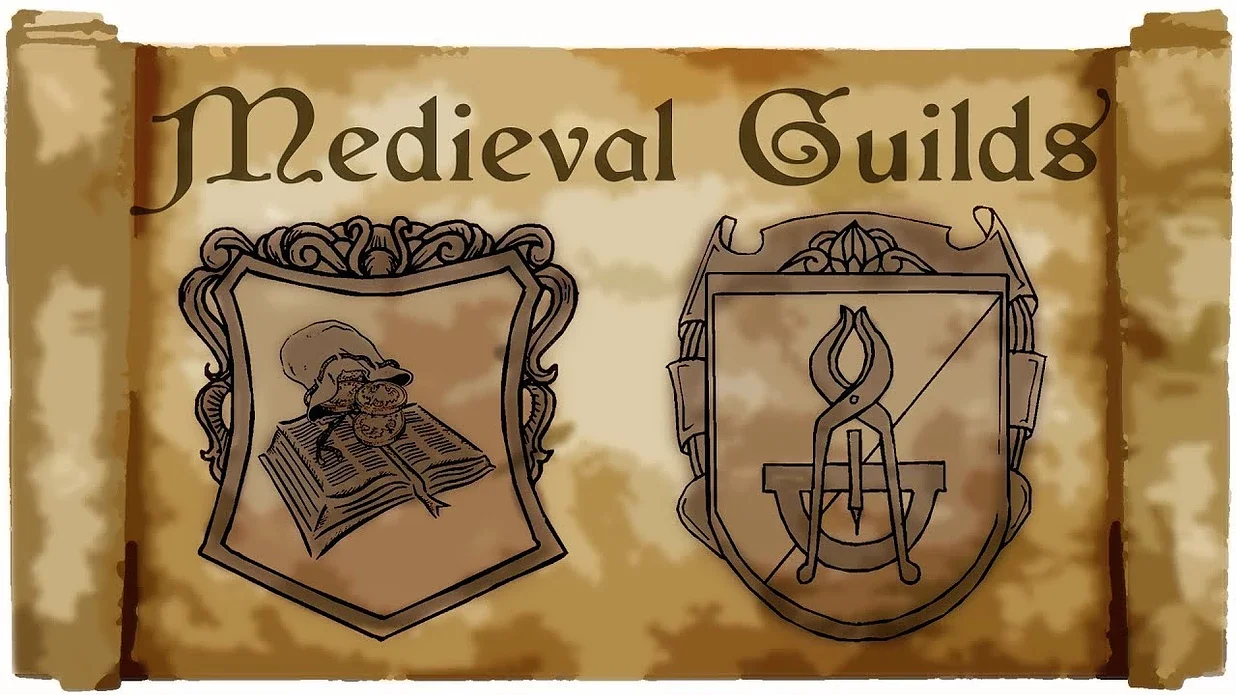
The Influence of the Guild
Crafts/tradesmen’s guilds also included pewterers, goldsmiths, and silversmiths. Silverware was a prudent investment for the wealthy.

Local Organizations: Craft and Trade Guilds
Trade and merchant guilds were an important part of crafting and trading in Europe from the 11th - 16th centuries. Guilds were comprised of groups of men of common craft or trade formed to give mutual aid and protections to its members.
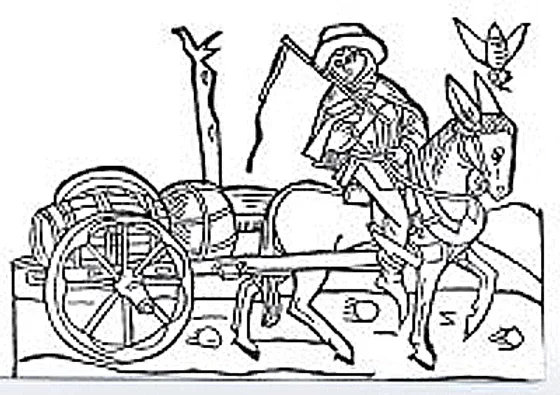
Comparing the Market Village to the Market Town
Most people living in Tudor England lived in a village of 200-500 people. The crofts, or fields, were positioned around a central, unpaved street and a village green.

The Planted Market Town
Planted market towns were either chartered by the monarch, in exchange for services to the crown, or by the Lord of the Manor. These charters granted villages the right to hold markets on certain days and to self-regulate market activity.

History of the Market Town in Britain
Markets as we think of them today began in the Roman Empire. However, as far back as the New Stone Age (9000-6000 B.C.) craftsmen (for example, potters and wool spinners) and farmers were becoming interdependent, as the discovery of agriculture opened the way for settlement of communities.
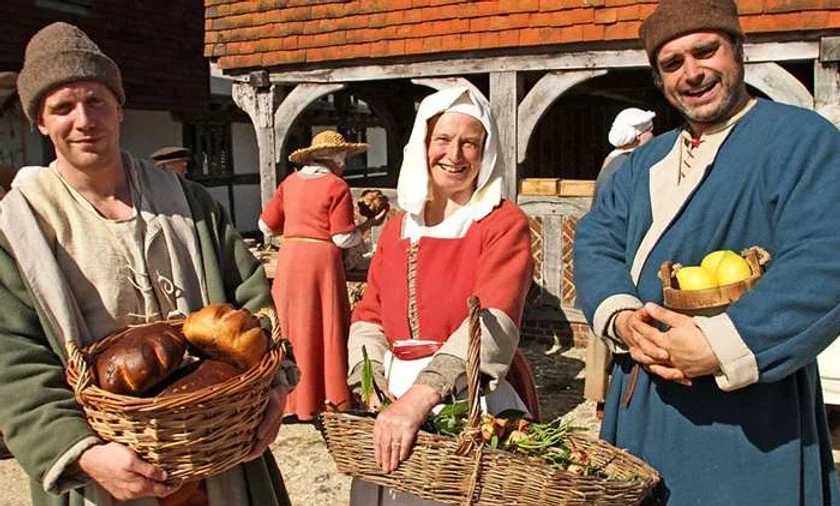
The Open-Air Market
Outdoor, open-air markets have been popular in Britain since Roman times. By the 16th and 17th centuries, the marketplace had evolved to include both small, local market stands, and the larger market villages that hosted yearly fairs, with the pinnacle being the market at the city of London.
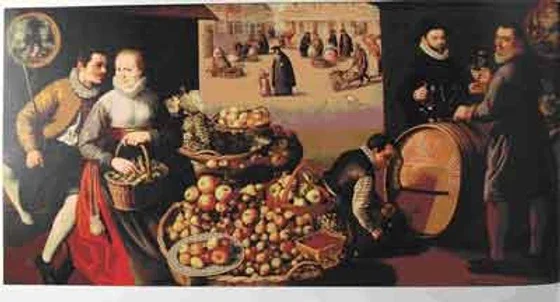
Going to Market: Setting out From Agecroft Hall
The farms and gardens at Agecroft Hall provided for most of the basic needs of the people who lived and worked there. Common fruits and vegetables, milk (cow and goat), basic meats (beef, chicken, eggs) and hides and wool were easily available to the manor.
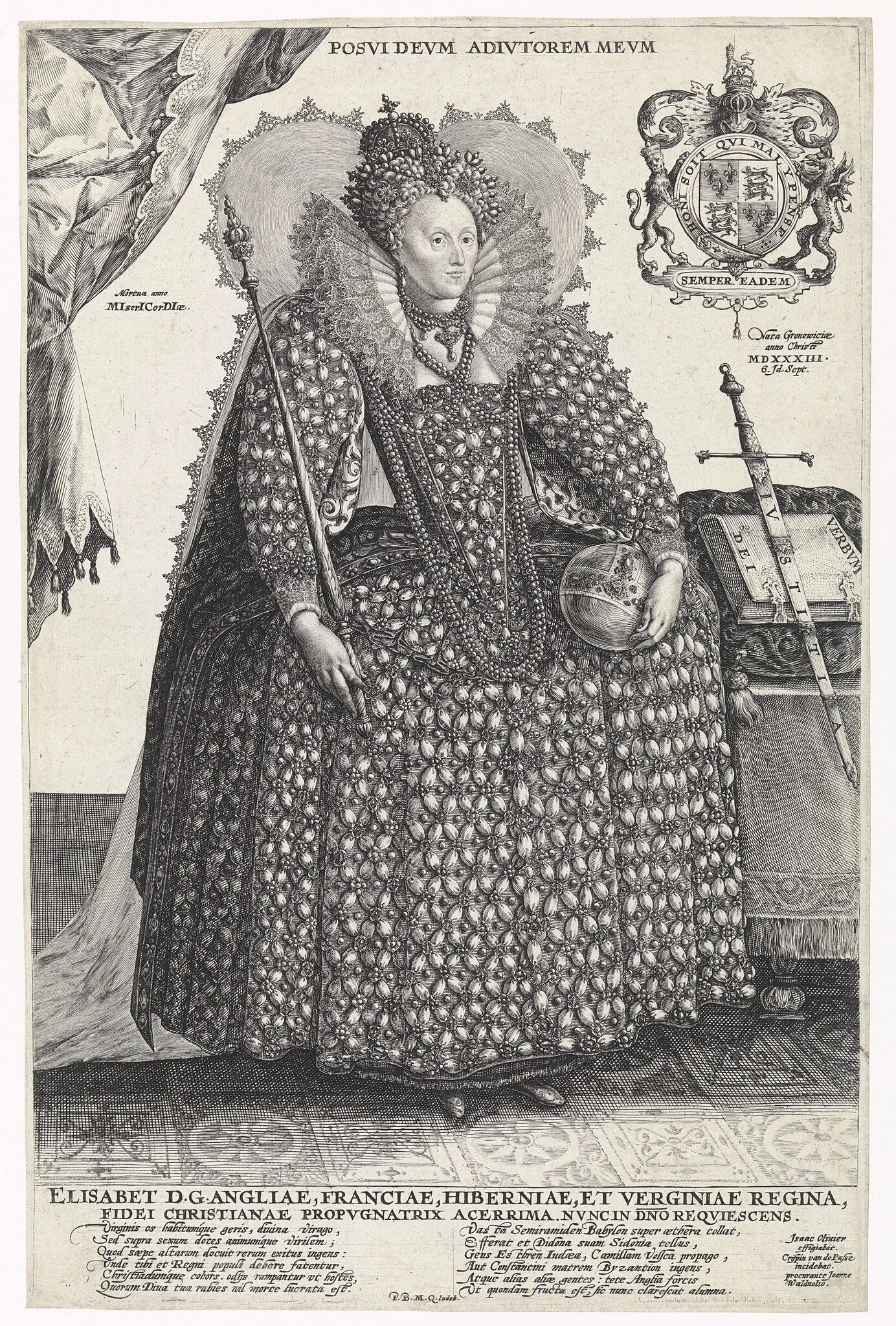
At the Mercer's Stall: A Conversation about Cloth
Once in town, a gentrywoman would have had many options for shopping. As mentioned in another post, she probably would have brought a servant with her to help with the shopping and carrying packages.
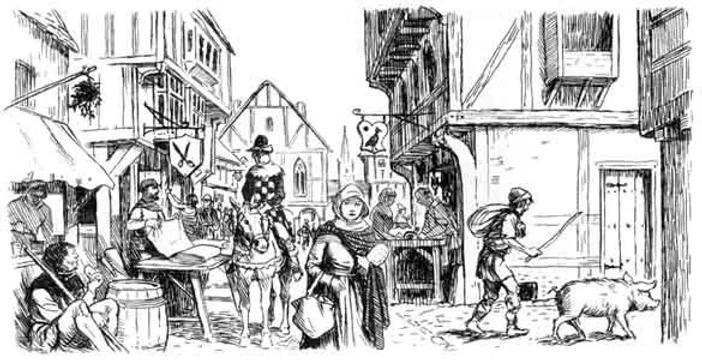
Guess My Trade
The following photos show real people reenacting Tudor trades and crafts. See if you can match the photos with the names and descriptions of each trade.
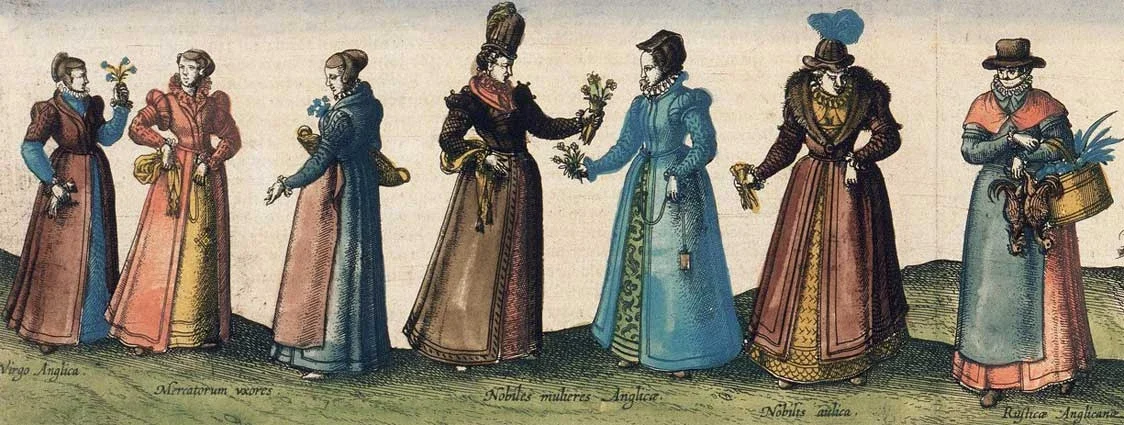
Two Gentlewoman Discuss a Trip to the Market
Let’s take a look at some of the conversations that might have occurred at Agecroft Hall about going to the market.

You Be the Judge! A Market Court Case from the Agecroft Archives
From the files of Agecroft Hall, we come across a court case that fits particularly well into this month’s theme. We have filled out the case a bit, since the information is scant.

Create Signs for Your Own Tudor Shops
Most people in Tudor England could not read. Signs posted above shops in a market town needed easily identify what their goods or services were. Retailers would hang signs with symbols painted onto them to illustrate what was sold there.
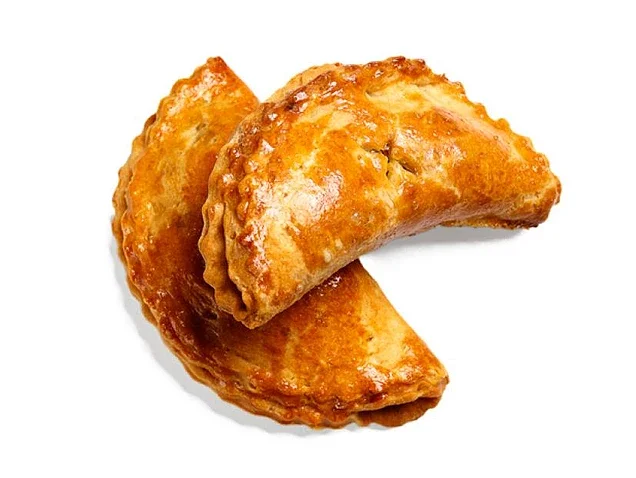
Meat Pies: Bake Some Tudor Fast-Food
Originating in Cornwall, South West England, the British meat pie is an oven-cooked pastry case traditionally filled with diced meat, potato and swede (rutabaga). Today it is usually filled with ground beef (beef mince) or steak.
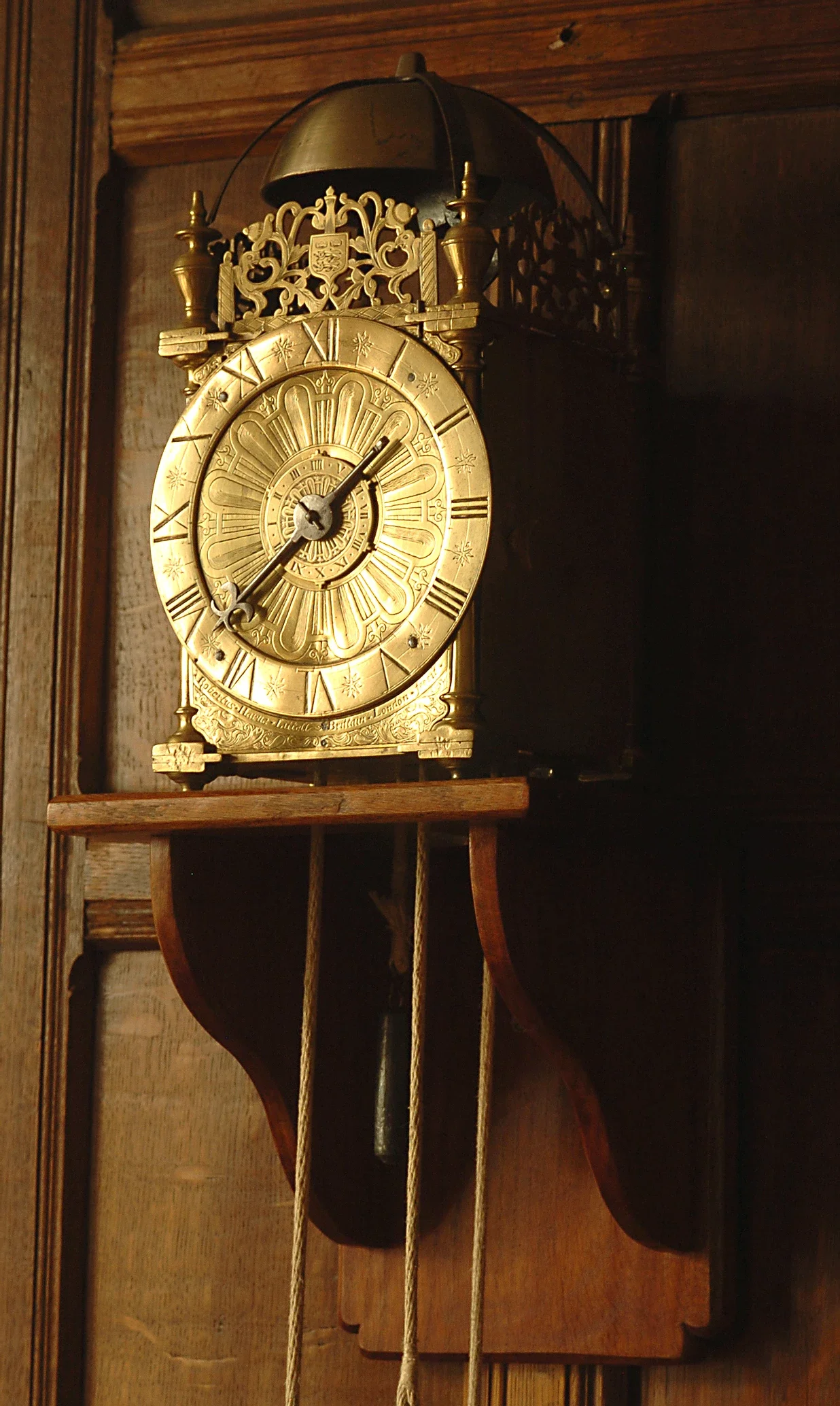
Market Goods at Agecroft Hall
Building on the other post referencing William Dauntesey's inventory, what items do we find on the probate that would have been purchased at market?
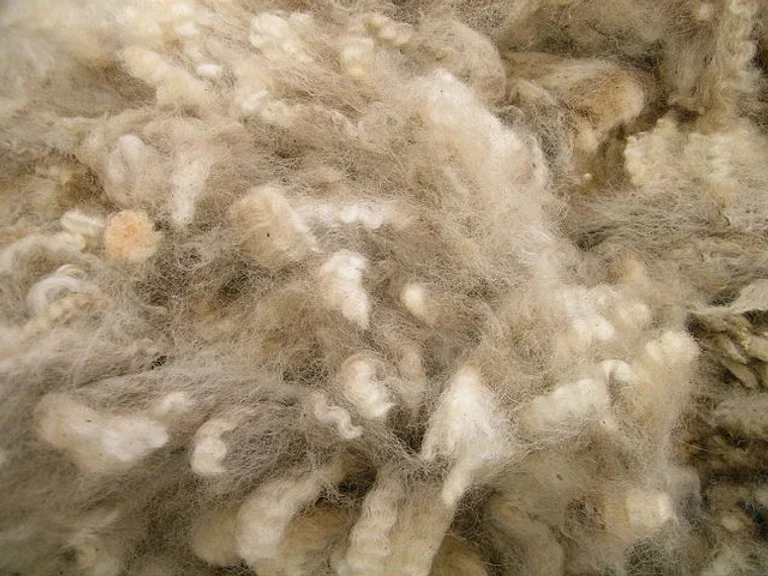
Agecroft Goods at the Market
We’ve discussed the markets near Agecroft. Now let’s discuss some of the products that the Daunteseys might have taken to their markets, and the items that they maybe have needed to purchase.
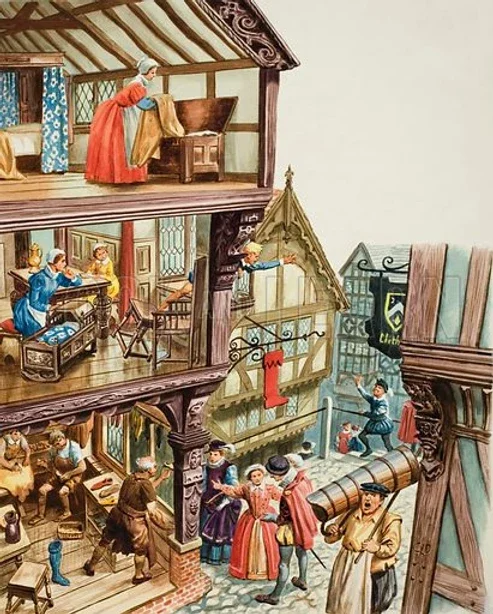
Seek and Find in a Tudor Market Town
The two pictures on this page show a lot of activity! The first drawing shows a cut-away of the interior of a market house with a shop below and living quarters above.
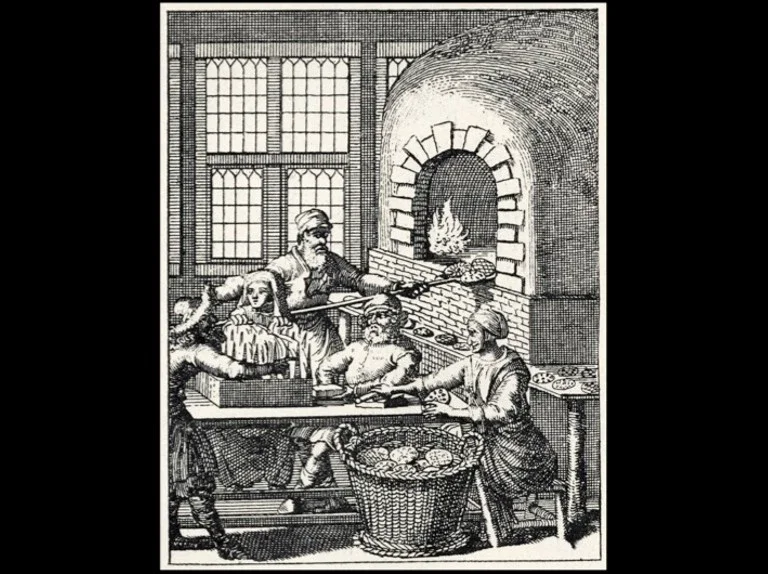
Battles at the Market
Tudor and Stuart England saw an increase in trade. As the stakes became higher, battles between merchants, and between merchants and market officials, became more common.
